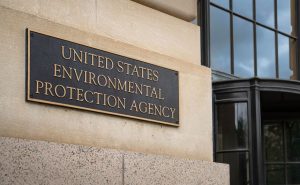Posted on September 15, 2023 by Jeffrey Porter
Sam Hess of Inside EPA reports that EPA and the Corps of Engineers are going to apply their tenth, post-Sackett, attempt to define Waters of the United States only in the states and territories that aren’t subject to injunctions in the cases that challenged EPA’s and the Corps’ ninth attempt.
In the 27 states where the ninth attempt wasn’t enjoined, EPA and the Corps are going to apply the “pre-2015 regulatory regime” to determine the reach of the Clean Water Act. As Ms. Hess reports, the Clean Water Act had a much broader reach under that “pre-2015 regulatory regime” than it does under EPA’s post-Sackett definition of Waters of the United States.
What does EPA mean when it refers to the “pre-2015 regulatory regime?” It says it means the “agencies’ pre-2015 definition of Waters of the United States, implemented consistent with relevant case law and longstanding practice as informed by applicable guidance, training and experience.”
In Sackett, the Court held that much of that “pre-2015 regulatory regime” was not authorized by Congress. Justice Alito, writing for the majority had a particular bone to pick with EPA’s “guidance, training and experience,” which he described as seeking to minimize prior Supreme Court opinions, “vague” and otherwise “inconsistent with the text and structure” of the Clean Water Act.
EPA says that the Corps and EPA are going to implement that “pre-2015 regulatory regime” “consistent with Sackett.” But we already know, from the negative reactions of EPA’s most recent attempt from many of those who challenged EPA’s and the Corps’ ninth attempt, that reasonable minds can differ on what is, and isn’t, “consistent with Sackett.”
I should add that in publishing their post-Sackett attempt to define Waters of the United States, EPA and the Corps said that attempt did not involve the exercise of any discretion because it did nothing more than revise the pre-Sackett definition to be “consistent with Sackett.”
Assuming that was true, and I don’t think it is, then what do EPA and the Corps think is the difference between its most recent attempt, which it says can’t be effective in the States in which the ninth attempt was enjoined, and the “pre-2015 regulatory regime” that they say will, for now, be effective in those States. I haven’t seen an EPA and Corps answer to that question.
Until we have that answer, I think we have to assume that there is a difference, especially since EPA is attempting to make a distinction. And that might mean, ironically, that the reach of the Clean Water Act might be broader in the States in which the ninth attempt was challenged than in the States in which the tenth attempt is effective.
And that has me wondering whether the plaintiffs in the soon to be revived challenges to the ninth attempt might be seeking to modify the terms of the injunctions in effect in those cases, say to substitute the Court’s holding in Sackett for the much more amorphous “pre-2015 regulatory regime.” After all, the same Judges who were comfortable enjoining the agencies’ ninth attempt would almost certainly consider themselves able to apply the Supreme Court’s holding, especially when EPA and the Corps have said, as they must, that they intend to live by it.
What is certain is more litigation and more confusion for the foreseeable future as the longest running controversy in environmental law continues.
“The agencies are committed to addressing issues that may arise in implementing the pre-2015 regulatory regime, for example, through approved jurisdictional determinations, Clean Water Act permits, and guidance,” Rose Kwok, an environmental scientist in EPA’s Office of Water, told a Sept. 13 webinar on the revised WOTUS definition.
https://insideepa.com/daily-news/epa-vows-address-issues-implementing-broad-2015-wotus-27-states

